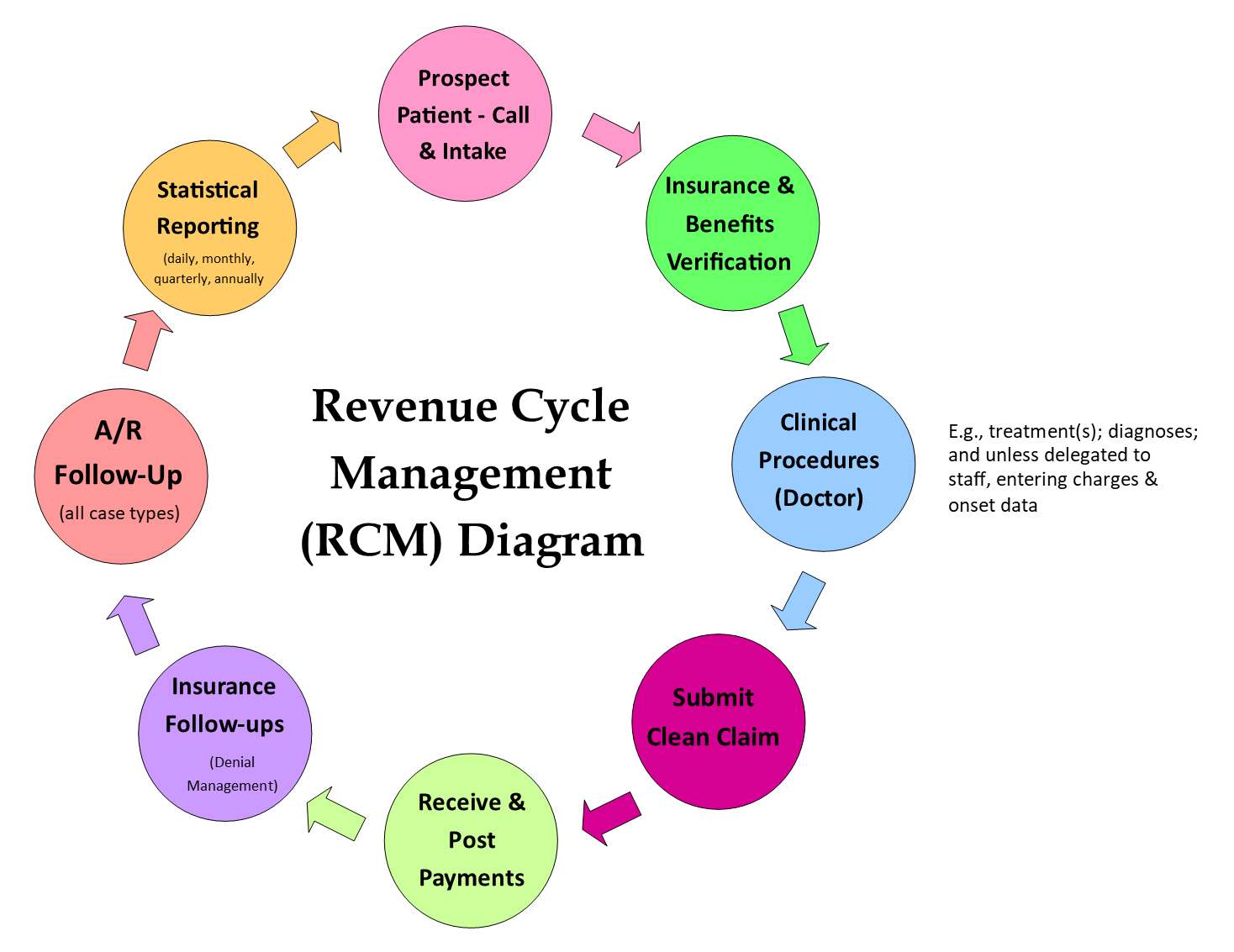Revenue Cycle Management (RCM)
Two weeks ago we hosted a webinar, How to make insurance work for your office using six components. Since then, there has been interest in learning more about revenue cycle management or RCM. You asked, and here it is delivered.
According to TechTarget*, revenue cycle management is the financial process facilities use to manage the administrative and clinical functions associated with claims processing, payment, and revenue generation. The below diagram will give you a visual. The diagram consists of eight elements, listed here:
- Prospective patient calls inquiring about services, and making appointment. This is where your revenue cycle begins. Proper intake sets the stage for future revenues.
- Insurance eligibility and benefits verification, is critical for you and the patient to determine best estimates.
- Clinicals (doctor treatment(s); diagnoses; and entering charges which can be done by doctor or staff, depending on your office procedures.
- Clean Claims submission: Mistakes can happen here, but once you are aware of what needs to be done to create a clean claim, you’ll know what to watch for when you review your claims batches prior to sending.
- Payment Receipt or denial from remittances, & Payment Posting
- Insurance follow-ups on denials/records requests
- A/R Follow Ups
- Statistical Reporting (we recommend running: Daily Collections; and then monthly/quarterly/annually running stats on New Patients, Patient Visits, Services-Charges, and Collections.
Revenue Cycle Management (RCM) Diagram
 The important thing here is to be consistent, meaning every step and each element of the flow must align with the goals and mission of the clinic. For example, a pediatric/wellness practice will have different polices each step of the way for RCM than a sports medicine clinic would. If you are having issues, you need to examine which step in your RCM is bottlenecked, or which step is not in alignment.
The important thing here is to be consistent, meaning every step and each element of the flow must align with the goals and mission of the clinic. For example, a pediatric/wellness practice will have different polices each step of the way for RCM than a sports medicine clinic would. If you are having issues, you need to examine which step in your RCM is bottlenecked, or which step is not in alignment.
Ed’s book, The Goal Driven Business, will help you ground your practice goals and develop and maintain the consistency needed to keep your goals in alignment with the cycle.
Oh, and if you are leaning towards planning for less insurance participation, watch for details on our next upcoming class, Converting to a Patient Self-Pay Model — Preparing for Your Future Practice.
Happy Fourth of July!
Lisa
PS: Download the RCM Diagram
References:
*https://www.techtarget.com/searchhealthit/definition/revenue-cycle-management-RCM
